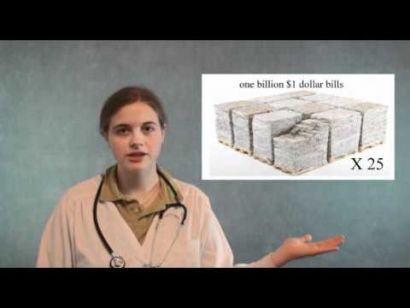- About
- Organization
- Organization Overview
- Dean’s Office
- Department of Bioengineering and Therapeutic Sciences
- Department of Clinical Pharmacy
- Department of Pharmaceutical Chemistry
- Quantitative Biosciences Institute
- Org Chart
- Research
- Education
- Patient Care
- People
- News
- Events
Bioartificial kidney addition wins LEGO robot design awards
By Susan Levings / Thu Apr 28, 2011
In fall 2010, a team of 8 school children won multiple awards in the Wisconsin regional and state FIRST® LEGO® League (FLL®) 2010 Body Forward™ Challenge, an international biomedical engineering competition involving a research project and robot games.
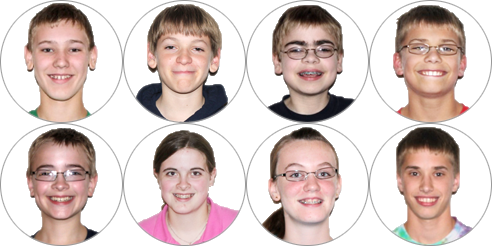
Left to right, top to bottom: IRAD Warriors Drew, Keegan, Marcus, Mason, Matthew, Mikayla, Rachel, Seth.
Known variously as VHS LEGO Buccaneers, IRAD Warriors, and iRADWarriors, the team envisioned a special device that would expand the function of a surgically implantable bioartificial kidney, which is now in development by a team of scientists from across the United States, led by Shuvo Roy, PhD, a faculty member in the UCSF Department of Bioengineering and Therapeutic Sciences.
The first-of-its-kind, coffee-cup-sized, implantable bioartificial kidney being developed by Roy and his team filters toxins from the blood and performs many other functions of a healthy kidney. The bioartificial kidney is intended to give patients with end stage renal disease (ESRD) the health benefits of a kidney transplant while addressing the limited number of kidney donors.
The adjunct device proposed by the IRAD Warriors team would attach to the bioartificial kidney and measure and adjust red blood cell count and monitor blood pressure. The ESRD patient would be notified of any change via wireless electronic signal sent to a pager.
Competitions won
VHS LEGO Buccaneers won the Robot Performance Award and the Champion’s Award in the Northeast Wisconsin regional competition, held November 13, 2010 in Appleton, Wisconsin. The win allowed the team to progress to the Wisconsin state competition, held December 4, 2010 in Oak Creek, Wisconsin, where they won the Robot Design Award.
“FLL is an exciting and fun global robotics program that ignites an enthusiasm for discovery, science, and technology in kids ages 9 to 14,” explains Mary Uchytil, who coaches the team with her husband Joe. “This year’s theme was biomedical engineering. Part of the requirements for the team was to identify a problem related to the year’s theme and provide an innovative solution. The kids chose to investigate the artificial kidney and see how they might help to improve it.”
A shared desire
The IRAD Warriors are all part of Valley Home Schoolers, Inc. Their school group brought them together as a team, and they have become close friends. Their decision to research the bioartificial kidney came from a desire to help Marcus, one of their teammates, who had a kidney transplant and has experienced many complications. “The bioartificial kidney has given Marcus hope for the future,” explains Uchytil.
“I was thrilled that the team decided to take a look at our bioartificial kidney and propose an excellent way of expanding its function,” comments Roy. “Congratulations to the team for a job well done. It was my pleasure to work with these young colleagues.”
About FIRST, LEGO, and the UCSF Department of Bioengineering and Therapeutic Sciences
FIRST (For Inspiration and Recognition of Science and Technology) is a non-profit organization founded by inventor Dean Kamen to inspire young people’s interest and participation in science and technology. LEGO is a line of construction toys manufactured by The LEGO Group, a privately held company. FLL is an international program created in a partnership between FIRST and The LEGO Group in 1998.
The Department of Bioengineering and Therapeutic Sciences at the University of California, San Francisco is dedicated to driving the innovation of intelligent therapeutics, such as the bioartificial kidney. The department is a joint department of the UCSF Schools of Pharmacy and Medicine.
Comments from the team
IRAD Warriors answered questions from Susan Levings, associate dean of planning and communications in the UCSF School of Pharmacy, about their experiences in the FIRST LEGO League competition.
Levings: How did you learn about the FIRST LEGO League competition, and what inspired you to compete?
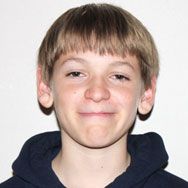
Keegan
The team: I learned about FIRST LEGO League from an email that went out to all Valley Homeschoolers (VHS) inviting others to join the VHS teams.
I have been collecting and playing with LEGO blocks for about 8 years, which has made me very skilled in building, destroying, and repairing them. I receive the LEGO catalogs on a regular basis. I have been looking at the LEGO MINDSTORMS NXT 2.0 that is used in LEGO competition, and was very excited about the possibilities.
When I saw the opportunity to learn how to build and program the NXT, I wanted to compete because it looked really fun, and I could learn about many different things. I received an NXT for Christmas so I can learn more for next year’s FIRST LEGO League.
Levings: How did you come to choose the bioartificial kidney as the focus of your project?
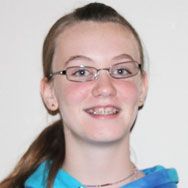
Rachel
The team: The international 2010 FIRST LEGO League theme was biomedical engineering. One of our team members, Marcus, has had kidney failure since the age of 3. Since we have such an incredible primary source for research and knew what ESRD (end stage renal disease) patients go through, we figured it would be a great thing to do! We wanted to help solve his problems and the problems of many other people.
Levings: What was involved in the regional competition?
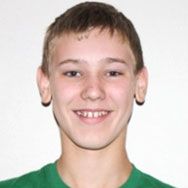
Drew
The team: On the morning of Saturday, November 13, we arrived at St. Joseph Middle School in Appleton, Wisconsin at 8:00 am. At 8:45 am we went to our first of 3 presentations, the project, in which we presented our bioartificial kidney. After that our team went on to the teamwork presentation, and then the technical (robot) presentation.
In the afternoon, we competed with our robot against other teams, and ended up winning the Robot Performance Award and the Champion’s Award. The latter goes to the team that did the best in every category.
Levings: Was the state competition a repeat of the regional or did you expand on your project? If so, how?
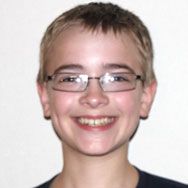
Matthew
The team: State is a bit more hectic than regional because there are more teams, and the teams will be better than the ones you faced at regionals. For the project presentation, we changed some of our lines throughout the skit, but we kept the basic shape of it. We did expand on how we could share the project with others. We did this by:
-
Making a 5-placard tour at our state competition table.
-
Posting a video of our presentation on YouTube.
-
Making a Facebook account for both The VHS LEGO Buccaneers and The IRAD Warriors.
-
Making a working demonstration of our erythropoietin pump.
For the robot, we made the attachments so we would be more time-efficient. With only two and a half minutes, there is no time to waste.
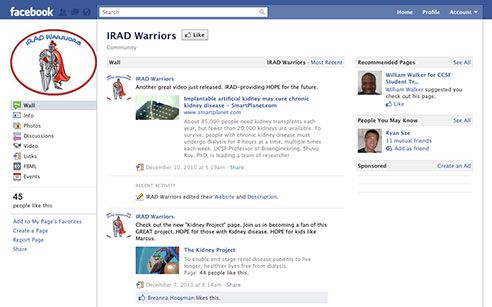
Levings: The competition stresses the importance of teamwork, which is also important in scientific research. How did you come to form a team? What did you learn about teamwork as you developed your project?
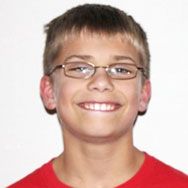
Mason
The team: We all liked LEGO blocks; we wanted to try it, and we were put on our team. We learned that some of our team members did hundreds of hours of work and some less, but we were a team, and we all put our hearts into the project.
Levings: As a result of this project, what did you learn about science and technology that you did not know before?
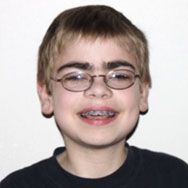
Marcus
The team: We learned about Dr. Shuvo Roy’s Implantable Renal Assist Device (IRAD) project, how it uses blood pressure to pump the blood through the kidney, how it uses nanopores to keep the immune system from attacking the kidney, and when there would be a testable bioartificial kidney. [Editor’s note: clinical trials in patients anticipated in 2016-2018.]
We learned the statistics of kidney disease: that 35% of people on dialysis die in the first 5 years and that 1 in every 10,000 people have it.
We also learned some of the functions of the kidney: It produces erythropoietin, which tells the bone marrow to make more red blood cells. It produces renin, which controls the blood pressure, and it converts vitamin D to calcitriol.
Levings: What was the best part of your work as an IRAD Warrior? What was the most difficult part of your work?
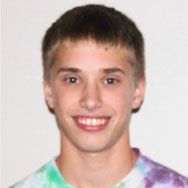
Seth
The team: I enjoyed being able to work with Dr. Roy and helping him to bring awareness of his project through Facebook and YouTube and in helping him to raise some money for his IRAD project.
I also enjoyed learning and researching more about ESRD, artificial kidneys, and I was amazed at how many people were affected by this disease and how much money the government is spending to help fight this disease. It was also a great experience to be able to help explain and bring awareness of this disease to hundreds of people all over America.
It amazed me how little most people knew about this disease and how most people wanted to learn more. It was also hard to get people to understand that the artificial kidney is a real idea that is in the development stage. We did not do what most teams did of just making it up but added on to Dr. Roy’s idea, and he said that our changes are reasonable and he might use them later on in his project.
The YouTube project took a lot of work. I would have to say it was the most difficult, but in the end I think it was also the most fun part of the year and if you have not yet watched our video I encourage you to do so.
Levings: Based upon your experiences, what advice do you have for future FLL teams?
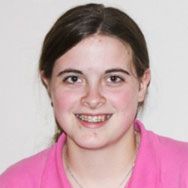
Mikayla
The team: My experience tells me that no matter how serious the meeting, everyone should always have at least one good laugh! It lightens the mood, keeping the team in better spirits! A team in good spirits helps the whole meeting go smoother and get more done.
Keep meeting notes of: who did what, the goals, any conflicts, and how you solved them. These notes are good to put in your teamwork manual.
As to the project, pick a topic that the whole team will enjoy helping with, finding information and making innovative ideas! You can have some fun with the skit, but remember to put a lot of facts in it.
Also, the more you keep your audience involved in the presentation the better they will remember it.
As for the robot part of FLL, keep your robot as simple as possible and robust enough to keep from falling apart. Use your sensors (light, touch, ultrasonic, rotation) wisely and try to get the most out of them. The more you understand how your robot works, when it does something and why it does it, the better.
Make manuals to give to your judges; explain how and why you did everything.
Act like you are explaining it to someone who knows nothing about your teamwork, project, robot, or programming.
Make clear what you are trying to explain; pictures are often very helpful in this process.
More about the bioartificial kidney
- Shuvo Roy shares promise of artificial kidney
- Animation shows bioartificial kidney in action
- Roy unveils model of artificial kidney
FIRST is a registered trademark of The United States Foundation for Inspiration and Recognition of Science and Technology. LEGO and MINDSTORMS are registered trademarks of The LEGO Group. FIRST LEGO League and FLL are joint registered trademarks of The United States Foundation for Inspiration and Recognition of Science and Technology and The LEGO Group.
Tags
Topics:
Category:
Sites:
School of Pharmacy, Department of Bioengineering and Therapeutic Sciences, PharmD Degree Program
About the School: The UCSF School of Pharmacy aims to solve the most pressing health care problems and strives to ensure that each patient receives the safest, most effective treatments. Our discoveries seed the development of novel therapies, and our researchers consistently lead the nation in NIH funding. The School’s doctor of pharmacy (PharmD) degree program, with its unique emphasis on scientific thinking, prepares students to be critical thinkers and leaders in their field.


